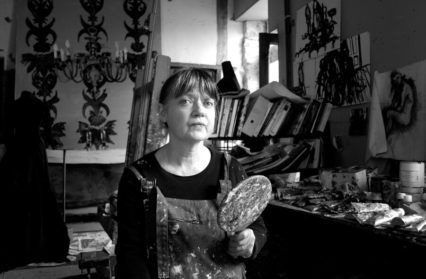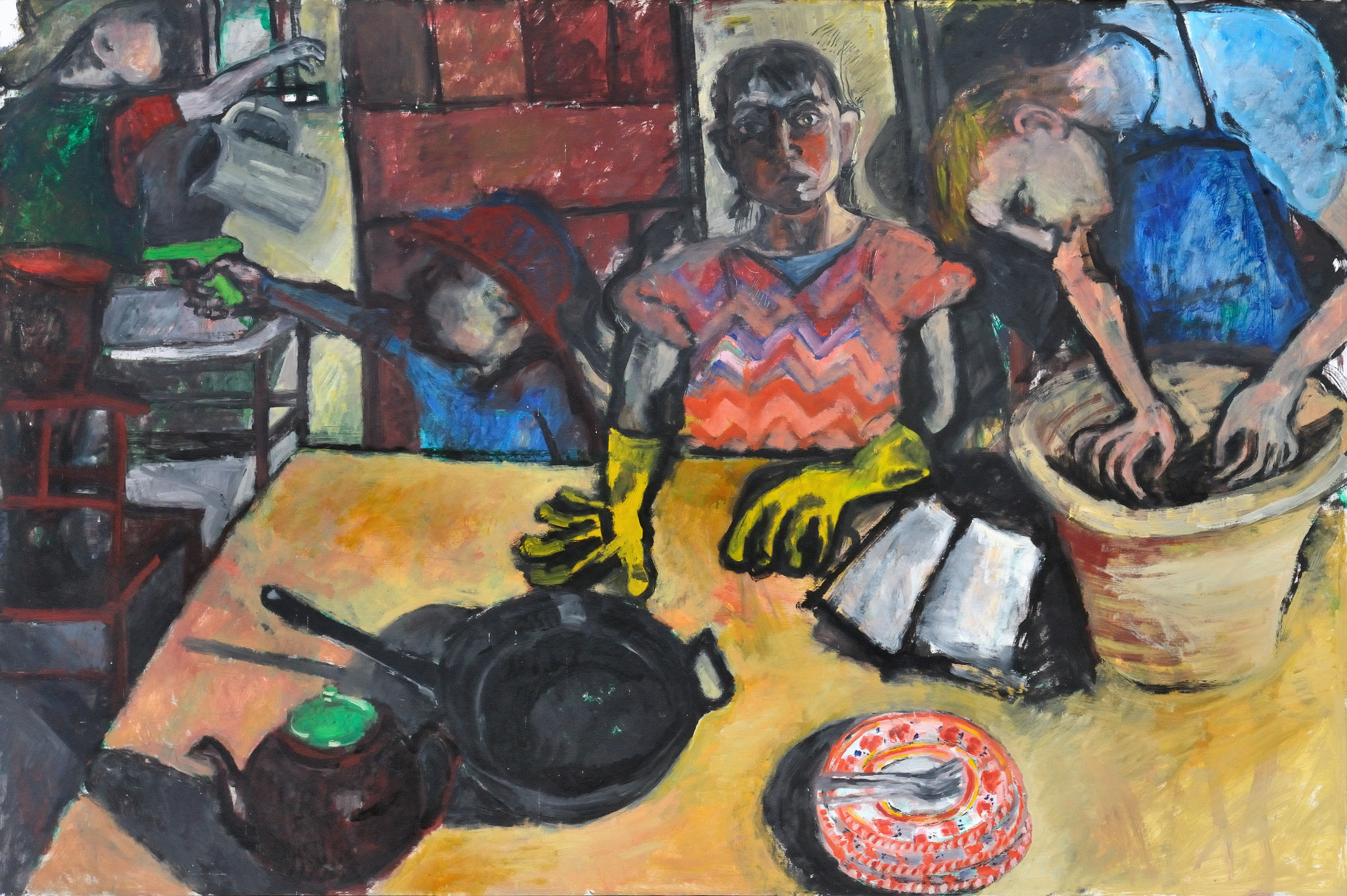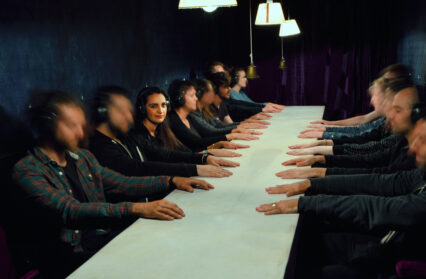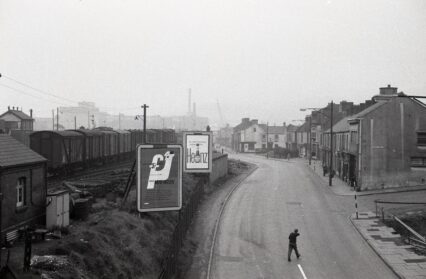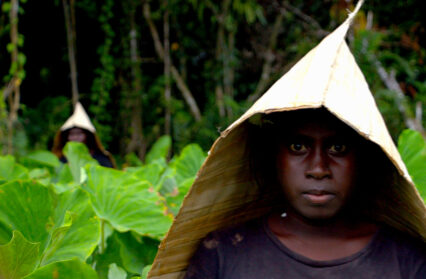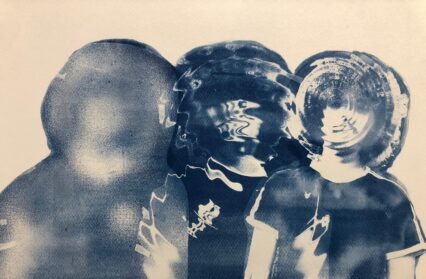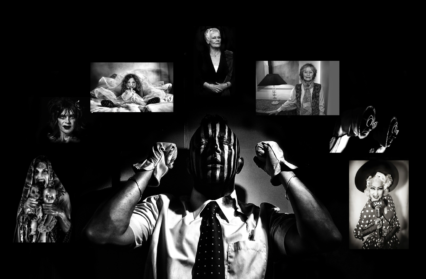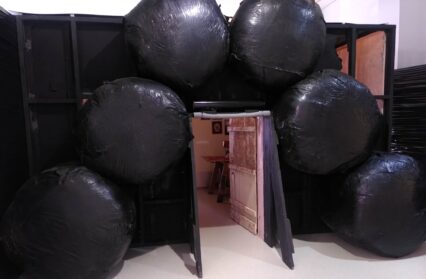In a brand new series from Wales Arts Review, we ask a selection of Wales’ leading visual artists to present and discuss the work that they identify as the moment they found their ‘voice’. To kick off the series, we speak to one of the most influential and successful Welsh artists of modern times, Shani Rhys James.
(Yellow Gloves 1987, Shani Rhys James)
Yellow Gloves was a significant painting – it was one of the first paintings I did when we came to live in Wales thirty two years ago. It was painted in the living room at a time when we were doing major building work to our Welsh house while living in it with two small children. We had little money and Stephen carried out most of the work. Dust and chaos were everywhere. I tried at least to keep the kitchen clean, and with two small boys clothes got filthy and were scrubbed on a scrubbing board. It was 1987.
This painting was done on hardboard glued to a rough pine structure. It is 4’x 6’. I had been doing a lot of drawings while the children were little but this was one of the first paintings I did when both children went to school and I had all day until the early afternoon before they came home.
In this piece there is the family in the kitchen, the two boys, one child holds a water pistol, the other is precariously reaching up to a shelf, Stephen is making bread and I am staring out in the centre of the painting wearing a pair of giant yellow gloves which are resting on the kitchen table. The kitchen table was an important piece of furniture to me because it was where we ate as a family, it was pine and could be scrubbed and it filled the kitchen. Everything centred around this table, the kids played and fought under it or sat on top of it. We had no television so this room was where we lived. It was a direct image. I was using the experience of being a mother with all the activity around me. It was thin paint and much is drawn in black paint. I probably felt the realisation of leaving London, living in isolation in an unknown place in the middle of Wales. We had previously done up a total ruin in East London which had no windows, floors, roof and we bought on the homesteading scheme. Steve did these up while at the Royal College of Art. I looked after the tiny children. But we felt London was no place to bring up children, they looked so sad walking down a treeless street, confined by pavements and engulfed in car fumes. My parents had gone to Wales 10 years before to be self-sufficient, having read John Seymour’s book on self-sufficiency, and we would take the children to their small-holding where they would become different children, excited and happy. Moving here for the children to have grass, fields and trees was also stressful. But it made me work like a maniac and then I was offered an exhibition at Oriel Davies for a two-person show. This was an incentive to work hard and all this experience came pouring out. And it was the realization I was ultimately alone, no job, totally unsupported, so we had to make this experience work and that meant doing my painting. But Steve who also is an artist had all the building work on his shoulders. It is fatal for an artist to buy a ruin because invariably there will be no money and if he is capable it will be carried out by him/her.
It was a slow growth, but I couldn’t escape because I don’t drive. Later I would paint from inside out, the paint would become thicker, less linear, more painterly but at the beginning it was important to get it down directly. There had been so much pent-up emotion and anxiety in a house needing so much work and all the energy needed for bringing up two small children. The family and personal experience became my source of work. I had painted about London, inspired by T.S Eliot’s The Wasteland and photographs I took in Camden Town, in a studio at Butlers Wharf near Tower Bridge. But having the children injected into me energy and personal experience and living in Wales gave me isolation and time.
– Shani Rhys James
You might also like…
In the second in a new series, Iwan Bala discusses the work that he identifies as the moment when he found his ‘voice’ as an artist.


